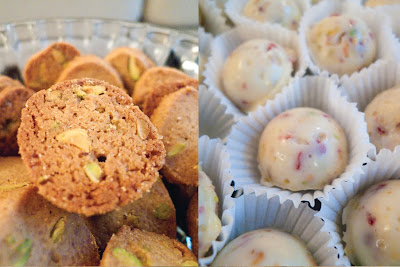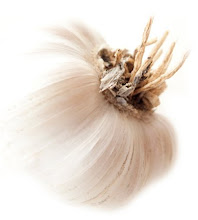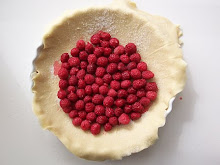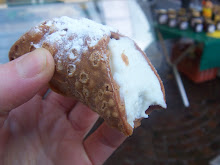 My week began with me in the kitchen baking. There were coffee cakes, savoury cakes, a tart, brownies, muffins and cornbread. A birth in the family and an independence day celebratory BBQ later, it is finally the weekend. Instead of sleeping in late, I dragged myself out of bed on Friday morning for to see what I could come up with at the farmers market. It is beyond crowded and I get annoyed from the pushing and shoving, but people are going crazy for high quality, local and seasonal produce like groupies in line for an 80’s revival (?) concert, so I cant stay mad for long. Getting by in the market is a precise task that calls for a surgical concentration; a quick ‘in and out’ act and I am back on my bicycle with a bag full of goodies and nobody gets hurt. Its almost as if it didnt happen only I have proof of purchase.
My week began with me in the kitchen baking. There were coffee cakes, savoury cakes, a tart, brownies, muffins and cornbread. A birth in the family and an independence day celebratory BBQ later, it is finally the weekend. Instead of sleeping in late, I dragged myself out of bed on Friday morning for to see what I could come up with at the farmers market. It is beyond crowded and I get annoyed from the pushing and shoving, but people are going crazy for high quality, local and seasonal produce like groupies in line for an 80’s revival (?) concert, so I cant stay mad for long. Getting by in the market is a precise task that calls for a surgical concentration; a quick ‘in and out’ act and I am back on my bicycle with a bag full of goodies and nobody gets hurt. Its almost as if it didnt happen only I have proof of purchase.I always seem to find treasures at the farmers market. Once it was chalk dry tart mini apples, there were lace long mulberries and last week I walked home with a brown paper bag full of custard marrow.
After reading in Jane Grigson’s vegetable book about vegetable spaghetti I was both intrigued and mighty pleased to find it in the market yesterday. Like the custard marrow, the squagehtti is a type of squash. It has a thready flesh reminiscent of pasta, hence its name. I boiled it, drizzled cold pressed sunflower seed oil, crushed salt and white pepper corns and topped it with roasted pumpkin seeds. A perfect light lunch.
Tell you what though, a drizzle of good raw tahini and smoked paprika elevated it to an even higher ground.

Vegetable spaghetti with pumpkin seeds and white peppercorn
Vegetable spaghetti
Sea salt
Freshly ground white pepper corns
Cold pressed sunflower seed oil
A handful of roasted pumpkin seeds
Tahini (optional)
Smoked paprika (optional)
Push in a skewer in the Vegetable spaghetti to make a hole and boil in plenty of salted water. It should be ready in 30-45 minutes, but pierce it with a knife to make sure the centre is tender. Remove and drain, then cut in lengthways to reveal the strings of flesh inside.
Remove the seeds and save for later.
Drizzle with the oil, season with salt & pepper and sprinkle the pumpkin seeds.
You can also drizzle with tahini and smoked paprika.
About the seeds:
Being a lover of all things efficient, once boiled and sliced open I removed the seeds and roasted them (thanks to Kate’s Halloween snack of homemade roasted pumpkin seeds I recall having for breakfast…).
Toss them in olive oil and seasoning, roast in 150°C preheated oven for 30 minutes, until golden brown.














